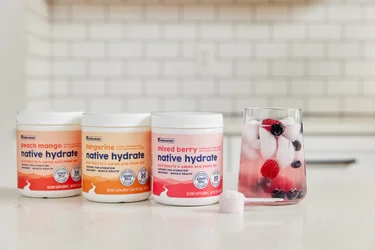Saunas offer a wealth of benefits for post-workout recovery. After a workout, tension and fatigue often accumulate in the muscles. Saunas combat this by offering dry, radiant heat to alleviate muscle tension and promote relaxation, fostering faster recovery.
Another way that saunas can speed up muscle recovery is by triggering the release of heat shock proteins. These proteins help cells adapt to stress, protect them from damage, and promote repair and regeneration. They can also help stimulate the production of human growth hormone (HGH) (6). Heat shock proteins and HGH are widely known to promote muscle growth and repair.
In addition to recovery, your post-workout sauna sesh can also reduce inflammation (7, 8). Inflammation is a natural response to muscle damage, and while acute inflammation (like redness, swelling, heat, or pain) can be healthy, chronic inflammation (which lasts for weeks, months, or even years) can be a problem.
There are two studies, in particular, that confirm this. The first is a study published in the International Journal of Sports Medicine, which found that post-workout saunas reduced inflammation in male endurance athletes (9). The second study, published in the Journal of Athletic Training, found that regular sauna use effectively reduced oxidative stress in male athletes (10). (Oxidative stress arises when there’s an imbalance of harmful reactive oxygen species (ROS), which can trigger inflammation.)
Muscle recovery? Check. Reduced inflammation? Check. What else?
Saunas also help your body acclimate to heat, which betters your ability to tolerate hot environments. According to dietitian Jordan Sullivan, through heat acclimation, “sweat glands become better at reabsorbing electrolytes, and your kidneys become better at retaining sodium, so less sodium is lost for a given activity.”
He goes on to note that “You also have greater preservation of plasma volume in your blood, which means you have less cardiovascular strain in the heat.” Put simply, your body will become more efficient in the heat (this is especially beneficial in the summer or if you live in a warm climate). You lose less electrolytes when you sweat, and your heart doesn’t have to work as hard.
To summarize, here’s a complete list of the benefits and risks of using a sauna after a workout:





